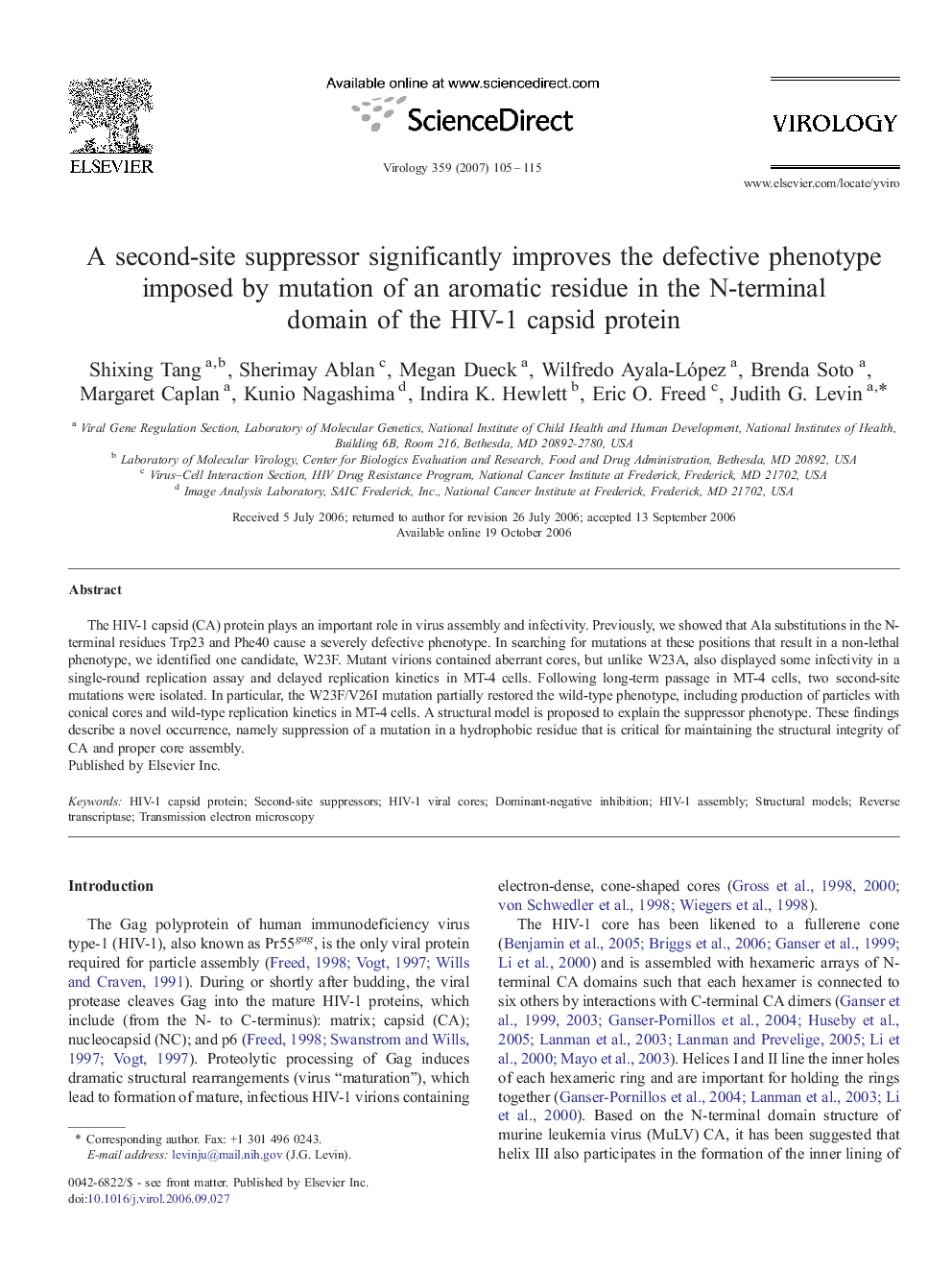| کد مقاله | کد نشریه | سال انتشار | مقاله انگلیسی | نسخه تمام متن |
|---|---|---|---|---|
| 3427478 | 1227399 | 2007 | 11 صفحه PDF | دانلود رایگان |

The HIV-1 capsid (CA) protein plays an important role in virus assembly and infectivity. Previously, we showed that Ala substitutions in the N-terminal residues Trp23 and Phe40 cause a severely defective phenotype. In searching for mutations at these positions that result in a non-lethal phenotype, we identified one candidate, W23F. Mutant virions contained aberrant cores, but unlike W23A, also displayed some infectivity in a single-round replication assay and delayed replication kinetics in MT-4 cells. Following long-term passage in MT-4 cells, two second-site mutations were isolated. In particular, the W23F/V26I mutation partially restored the wild-type phenotype, including production of particles with conical cores and wild-type replication kinetics in MT-4 cells. A structural model is proposed to explain the suppressor phenotype. These findings describe a novel occurrence, namely suppression of a mutation in a hydrophobic residue that is critical for maintaining the structural integrity of CA and proper core assembly.
Journal: Virology - Volume 359, Issue 1, 1 March 2007, Pages 105–115